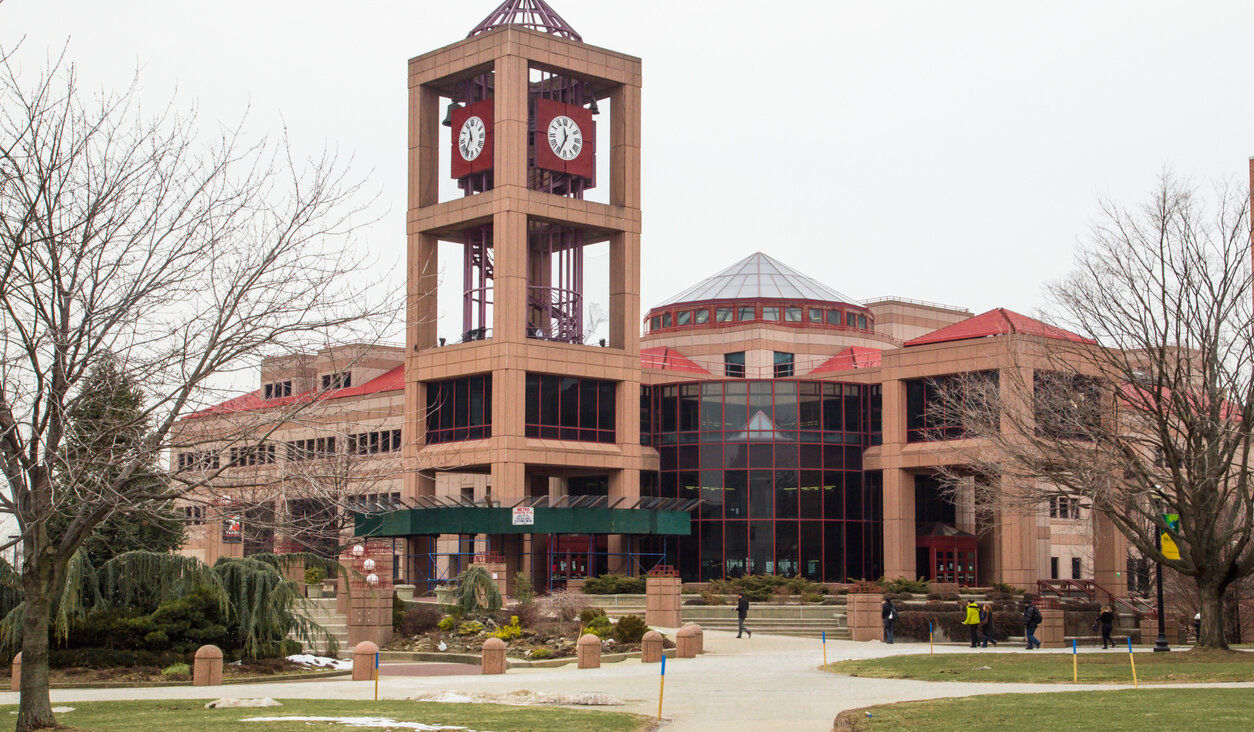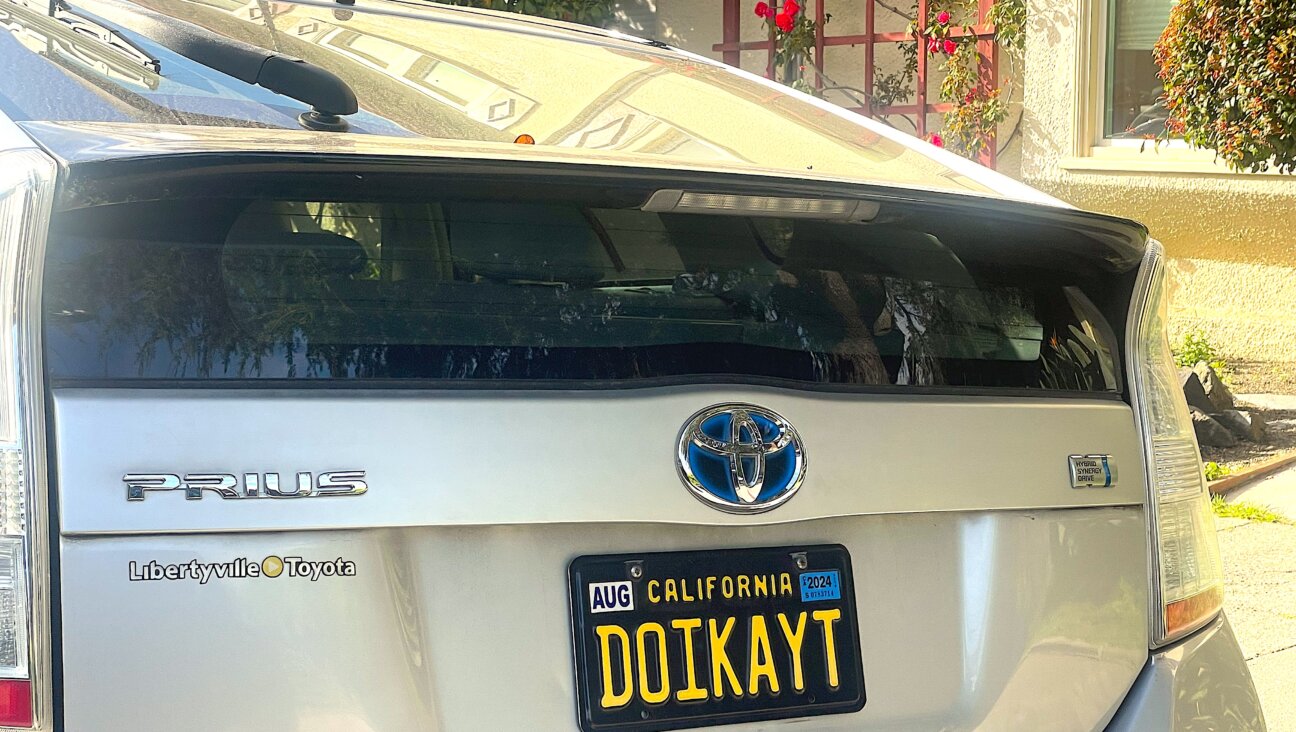When Santa at the Mall Is Jewish

Image by nate lavey
Two years ago on Rosh Hashanah, Dana Friedman was dressed in his Santa Claus costume for a promotion in New York City’s Times Square, when a group of men in yarmulkes approached him and asked to have their photo taken with him. “Shana tova!” he told them. And then, registering the look of surprise on their faces, he added, “They couldn’t get a goy to play this part.”
Friedman, a 53-year-old Jewish civil attorney from Queens, has been playing Santa for 11 years. It all began after the September 11 attacks, when Friedman, whose law office is located just blocks from the World Trade Center site, wanted to find a way to give back to first responders. Instead of donating money, his secretary suggested that he don a Santa suit and make Christmastime visits to the families of firefighters and police officers affected by the attacks. What began as an act of “tzedakah,” in Friedman’s words, soon turned into a seasonal side job.
Today, with his gray hair bleached to a chalky white, and his beard groomed in kingly curls, he suits up in nine layers of red-and-white regalia and spends the month of December in malls and hospitals, hoisting children onto his knee for keepsake photographs. Only rarely does he divulge his own religious background, and usually just when the family in question is Jewish. But he always gets the same tickled response. “It’s something people don’t expect,” he said.
Friedman isn’t the only Jewish man to make the December transformation into Father Christmas. “The phenomenon is more widespread than one realizes,” said Rabbi Joshua Eli Plaut, author of “A Kosher Christmas: ‘Tis the Season to Be Jewish.” “You don’t know who is Jewish and who isn’t.”
Tim Connaghan, who runs a training course for aspiring commercial Santas, says he has worked with some 20 Jews over his years of coaching and outfitting Santas. At the behest of the Forward, Connaghan put out a call for Jews on his Kringle Group listserv of 2,200 real-bearded Santas. Around a half-dozen responded. Like Friedman, most of them took on the role after friends or family members asked them to play Santa in what they thought would be a one-off event — a Christmas party at an elementary school, or a fundraiser for disabled children — and became enamored of Santa’s magnanimous persona. But others came down with Santa fever at a young age.

Image by Nate Lavey
As a teenager, Rick Rosenthal, a 60 year-old divorce coach from Atlanta, created a character called Abie Claus, a skinny Jewish Santa in a red suit with a blue Star of David on the back and, “for a little zing,” peyes, or sidelocks. He would slip bagels onto boughs of his friends’ Christmas trees and hand out gifts at holiday parties. As he grew older, Rosenthal occasionally revisited his Santa guise. Last year, when both his parents died within the span of two weeks, he grew out his beard in mourning. It came in white. “That is how I decided to be a real-bearded Santa this year,” he said. Rosenthal ordered “Santa for Hire” yard signs and placed posters of himself on telephone polls, booking parties for $100 to $400 an hour for Christmas week.
As a Modern Orthodox Jew, Rosenthal sought and received his rabbi’s permission to play Santa, whom he describes as a secular character invented by the Coca-Cola Co. who “runs around in red.” (The company didn’t create Santa Claus, but the character was popularized by its 1930s campaign.) “I am not St. Nicholas,” Rosenthal said. “I have a problem with that. St. Nicholas is a religious person, he is a saint, and this is where you have to use discretion. Jews shouldn’t be dressing up as saints.”
Rosenthal doesn’t play Santa on the Sabbath, but he does work during Hanukkah, because it has no religious restrictions. “Even though I am Orthodox, I hug people,” he said. “I don’t have a problem with that. There are people who want to hug and kiss you that aren’t 6-year-olds, and that’s okay.”
Other Santas, however, report occasional awkwardness with their faith communities. Stanley Taub, a 67-year-old retired electrician in Los Angeles’s San Fernando Valley, says he takes on the role of Santa throughout the Christmas season. He attaches fake reindeer antlers to his car, bleaches his long hair white and sports a red shirt even when he’s off duty, in order to charm children into thinking they’ve had a run-in with Father Christmas. Sometimes, his appearance is met with smirks in synagogue. “It’s like: ‘Here comes Santa. He’s dressed in red again,’” he said.
Friedman, who works several days a week at the Sky View Center mall in the Flushing section of Queens and then spends his earnings on toys for hospitalized children, said, “There are positive and negative responses.” A few Jewish acquaintances have told him that he is committing a sin. “Some non-Jews are highly offended that I am playing Santa,” he added. “They say: ‘You can’t be Santa! You’re Jewish.’ I say: ‘Jesus Christ was Jewish. Go argue with him.’”
Plaut, for his part, sees no spiritual downside to playing Father Christmas. In his perspective, Jewish mall Santas are fulfilling a “Christmas mitzvah”by “helping to spread good cheer and acts of loving kindness, gemilut hasadim, to our neighbors and fellow citizens.”
Religion, however, rarely comes up in the mall setting, and some Jewish Santas say they actively avoid the topic. E. Maurice Golde, a 73-year-old New Orleanian who calls himself “Jewie Claus,” said: “As a commercial Santa, you don’t bring up anything about your religion. When I am challenged, I always say, ‘Christmas, Santa Claus, St. Nicholas — they all represent the spirit of giving.’” Even so, Golde has utilized his Jewish background (he now identifies as a messianic Jew) to help other Santas prime themselves for interacting with Jewish and intermarried parents who bring their children to the mall. At a workshop last January, hosted by the Fraternal Order of Real Bearded Santas, a national association for Santas, Golde presented on the basics of Hanukkah, advising participants to memorize a “favorite” latke recipe to share with Mom or Dad.
Other Jewish Santas say they occasionally reveal their identity to fellow Jews. Last year, Jonathan Rich, a 66-year-old retired sales manager, worked a promotion for Microsoft at a mall in Los Angeles filled with “13-year-old Jewish thugs.” “I would wave at them and say, ‘It’s a mitzvah to have your picture taken with Santa,’” he said. They would look at me, lower their eyes, and say, ‘You’re Jewish?’” Nathan Englander’s short story “Reb Kringle” depicts a far bleaker encounter between a Jewish Santa and a Jewish child. When the young boy tells Itzik, the Jewish Santa, that his stepfather won’t let him celebrate Hanukkah, Itzik blows a fuse, outing himself as a Jew to the mall goers. “This,” he says, “is not a job fit for a Jew.”
But real-life Jewish Santas disagree. “The Jewish Santa has a little more smarts than the gentile Santa,” said Richard Aptekar, a 71-year-old actor who plays Santa at parties in the San Francisco area. “Most Santa Claus characters are pretty straight. They do the ‘ho, ho, hos,’ and they’re kind and gentle. But they don’t have the sense of humor that I think I do.” Friedman feels similarly. “I think I have more of a sense of humor about it,” he said. “I come from the generation of Borscht Belt comedians. I can respond quickly, off the cuff.”
For many, however, Christmas begins and ends with the red-and-white suit. “I am not having a Christmas tree,” Rich said. “To me, it’s a Christian symbol. I don’t want that. It’s not me. I am Jewish.”
Contact Naomi Zeveloff at [email protected] or on Twitter @NaomiZeveloff

I hope you appreciated this article. Before you go, I’d like to ask you to please support the Forward’s award-winning, nonprofit journalism during this critical time.
Now more than ever, American Jews need independent news they can trust, with reporting driven by truth, not ideology. We serve you, not any ideological agenda.
At a time when other newsrooms are closing or cutting back, the Forward has removed its paywall and invested additional resources to report on the ground from Israel and around the U.S. on the impact of the war, rising antisemitism and the protests on college campuses.
Readers like you make it all possible. Support our work by becoming a Forward Member and connect with our journalism and your community.
Make a gift of any size and become a Forward member today. You’ll support our mission to tell the American Jewish story fully and fairly.
— Rachel Fishman Feddersen, Publisher and CEO
Join our mission to tell the Jewish story fully and fairly.























